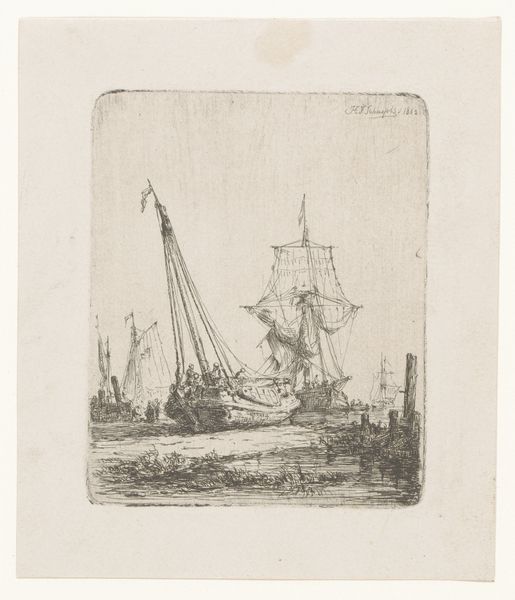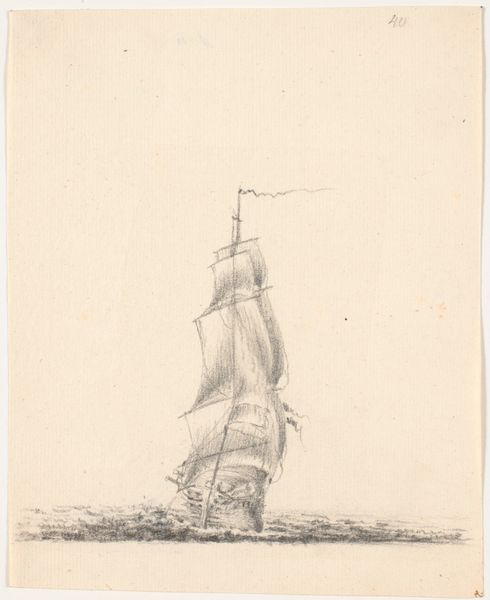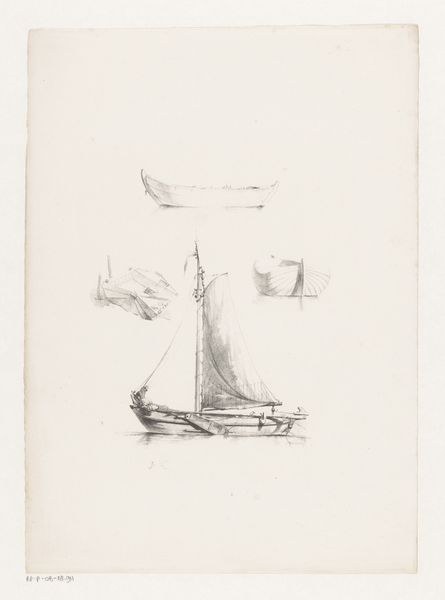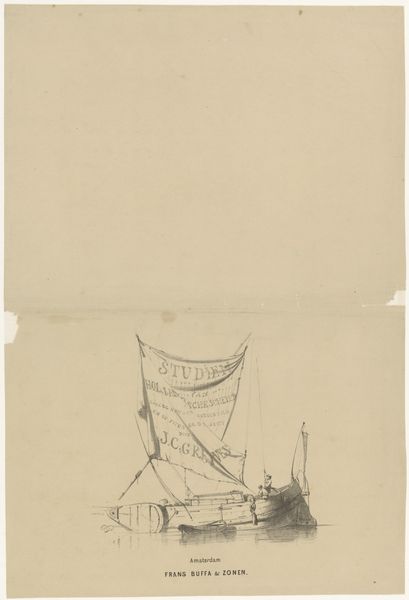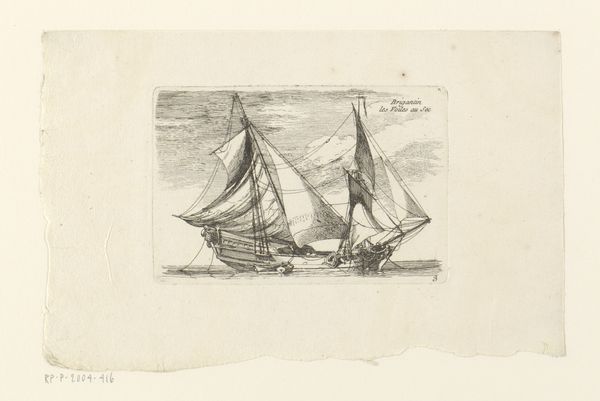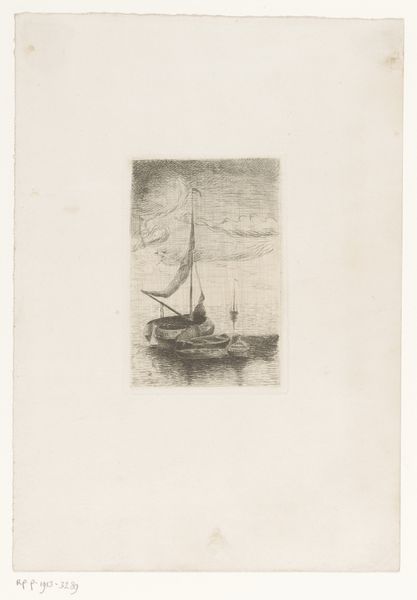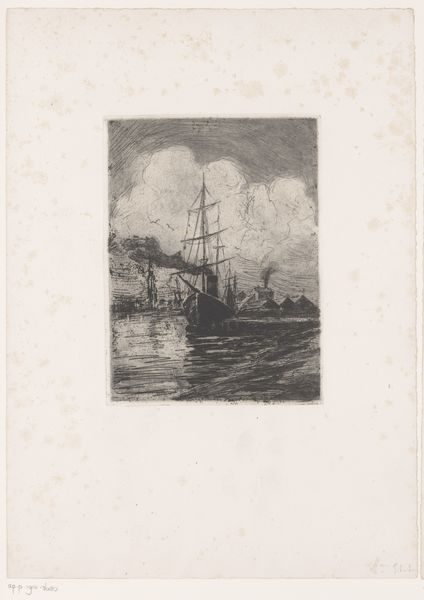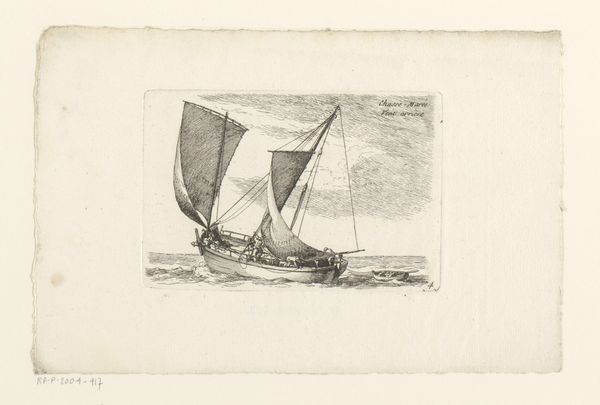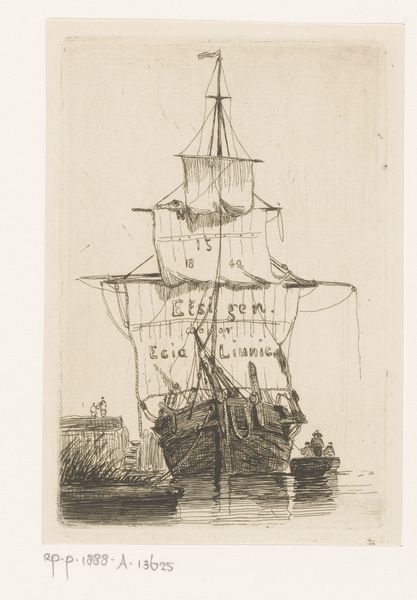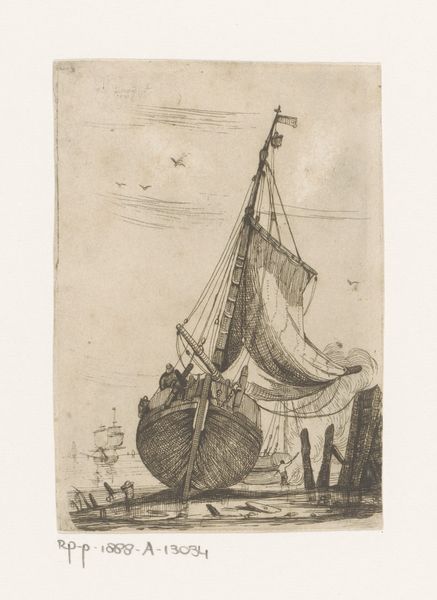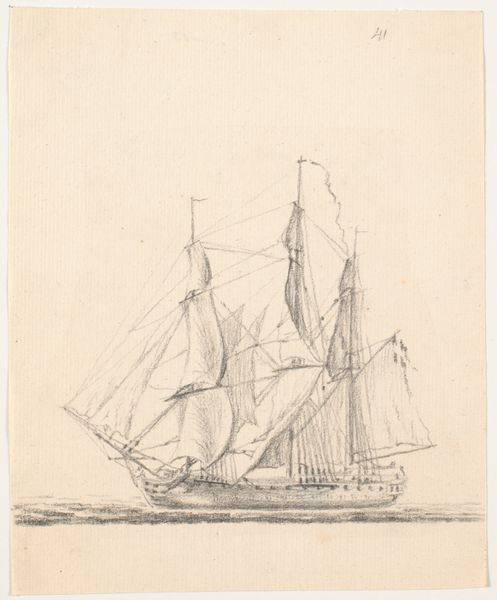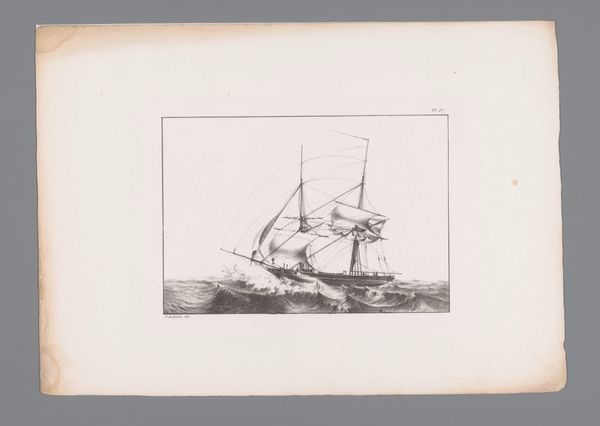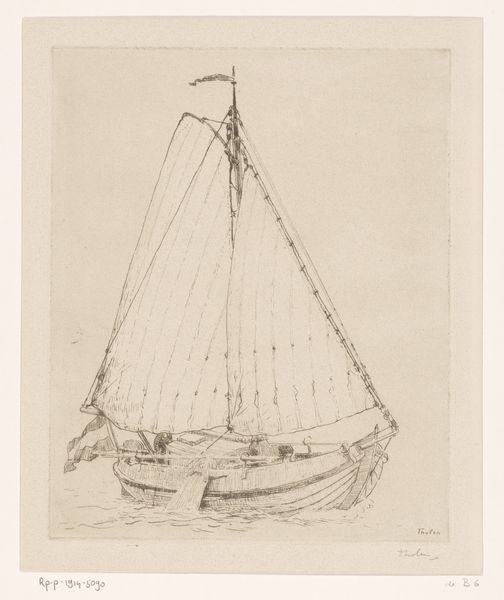
drawing, print, etching, paper
#
drawing
# print
#
etching
#
landscape
#
paper
#
line
Dimensions: height 105 mm, width 68 mm
Copyright: Rijks Museum: Open Domain
Editor: Here we have Lucie van Dam van Isselt's "Tweemaster," created sometime between 1881 and 1949. It’s an etching on paper. The ship looks majestic, but almost fragile in this rendering. What draws your attention when you examine the piece? Curator: Immediately, the contrast between the delicate lines defining the sails and rigging, versus the relative density used to depict the ship's stern, strikes me. This contrast isn't just visual; it creates a dialogue about weight and lightness, perhaps reflecting the duality of maritime life itself - adventure versus vulnerability. Notice also the cloud of smoke on the left—it provides an asymmetry that drives the eye upward along the masts, countering the downward pull of the ship's heavier base. Editor: I hadn't considered that asymmetry, it definitely prevents the ship from feeling static. Is the lack of background detail important? Curator: Absolutely. The minimal context forces us to focus solely on the ship as an object, allowing the artist to explore line and form with incredible precision. It almost transcends being merely representational. Note how the interplay between positive and negative space – the ship versus the paper – becomes crucial to understanding its presence. How would you describe the relationship between line and void in this piece? Editor: I see how the lines really define not only the ship but also create a sense of depth within the image, making the sails seem almost translucent against the emptiness. It’s quite clever. Curator: Precisely. It shows a sophisticated awareness of formal elements. Ultimately, Van Dam van Isselt invites us to appreciate the beauty inherent in the ship’s design and the skillful manipulation of the etching medium itself. Editor: It’s amazing to consider all these visual choices! Now I look at it, I see this ship not as just an image of a ship but more as an intricate study in contrasts and composition.
Comments
No comments
Be the first to comment and join the conversation on the ultimate creative platform.
